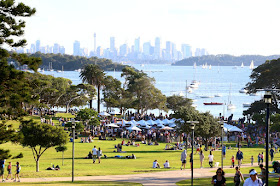The Cambodian capital of Phnom Penh is a fascinating place with a macabre history - but it is possible to have fun, too.
1. Monumental interest
The Independence Monument, built in 1958 to celebrate Cambodia's independence from France in 1953, stands at the intersection of Norodom and Sihanouk boulevards, one of the city's busiest intersections. It is a high-rise lotus-shape structure that has been modelled on the central tower of Angkor Wat.
2. National Museum
There is a lot more to Khmer history than the recent Khmer Rouge atrocities - and this is the best place to learn about the culture of the local people. A red-sandstone building of colonial Khmer design, it is home to sculptures, ceramics, textiles, glass, pottery and bronzes dating back as far as the 12th century. The building was designed by renowned French architect George Groslier under the direction of King Sisowath, who wanted to preserve Khmer cultural heritage.
3. The killing fields
Choeung Ek, a 35-minute drive out of Phnom Penh, is the hamlet where Pol Pot's murderous Khmer Rouge slaughtered thousands of Cambodians and buried them in mass shallow graves between 1975 and 1979. Many of them were bludgeoned to death to save the cost of a bullet. Formerly an orchard and Chinese cemetery, Choeung Ek is today an eerie place where the remains of almost 9000 were discovered and more remain underground. It is estimated up to 20,000 people died here. Human bones can be seen protruding from the ground in some places and skulls of many of the victims are stored in a macabre memorial tower. Choeung Ek is the best known of more than 300 killing fields throughout Cambodia.
4. Local flavours
Khmer cuisine tends to be flavoursome without being overly spicy. Kampot pepper is more prevalent than chillies, which tend to appear as a side dish - good news for those who don't like their food too hot. Rice-noodle soups, stir-fries and curries are common and you'll occasionally find frog's legs, reminiscent of French colonial days. Sit at local roadside cafes and pay just a couple of dollars.
5. Toul Sleng
The Khmer Rouge ruled Cambodia for less than four years but this short chapter devastated the country and those who survived Pol Pot's reign of terror. Toul Sleng, on the fringes of downtown Phnom Penh, is a former high school that became known as S21, a centre of torture and interrogation of political prisoners that is now a genocide museum showing in graphic detail the beatings and humiliations dealt out to more than 17,000 who passed through the doors. Some history books say that only seven people survived, and one of them, Chum Mey, can be found in the grounds selling a book written about his horrific experiences. S21 remains exactly as it was, surrounded by barbed wire.
6. Cyclo rides
Cyclos, better known as cycle rickshaws, are dying out throughout south-east Asia, replaced by motorbikes and tuk-tuks. Some do survive, however, usually ridden by cyclists from poor country families, who sleep in their cyclos at night. Tour companies such as Footsteps in Asia, which custom-designs tours of Cambodia and Vietnam, use cyclos supported by Cyclo Centre, a non-government organisation that is helping keep the tradition alive. A cyclo ride gives a close-up view of the city and its people without anything to obscure the sights, sounds and smells. A one-hour ride can cover many highlights, including Wat Phnom, the Central Post Office, palaces and museums. The passing parade can be absolutely fascinating.
7. Wat Phnom
Set atop a 27-metre-high artificial hill, Wat Phnom (Temple Hill) is the capital's tallest temple and a gathering place during the annual Pchum Ben, the festival of the dead. Legend says the temple was built in 1373 to house several Buddha statues found washed up on the banks of the Mekong by a woman named Penh. Today, the gardens surrounding the temple are popular with locals, who use them for family gatherings, and with visitors, who use the benches as picnic areas.
8. Royal Palace
Dramatic both inside and out, the Royal Palace dates back to the late 1860s and is noteworthy for its classic Khmer architecture, elaborate gilding, soaring spires and golden temple nagas (carvings of mythical reptilian creatures). The palace is an oasis of peace in the middle of an increasingly frenetic Phnom Penh city centre and its lush French-style gardens house life-size sculptures of Khmer warriors and Buddhas reclining in a range of poses. Don't miss the Silver Pagoda, also known as the Temple of the Emerald Buddha; its floors are covered with more than 4000 silver tiles. It was rebuilt in 1962 and houses religious and cultural artefacts.
9. Market shopping
Phnom Penh is full of bustling street markets, all of which merit leisurely exploration even if you have no intention of buying anything. Bargaining is de rigueur, although you will still pay a "foreigner's price", and expect to be bumped into on occasion. Among the major markets are Psar Thmei (Central Market), Psar Tuol Tom Pong (Russian Market), Psar Chas (Old Market) and O Russei, the most modern of them all. Pick up gifts such as local coloured check scarves known as kramas, Kampot pepper and silk purses.
10. Dine with Friends
Friends is a charity-run eatery that trains Phnom Penh street kids in restaurant skills (kitchen, front-of-house, waiting etc) so they can find jobs in hospitality. Friends specialises in what it calls Western and Cambodian-style tapas and frozen daiquiris (think Khmer glass-noodle salad with fish cake slices and fresh herbs or Cambodian chicken curry). The service is charming and your dollars go a long way to improving someone's life. Profits from the restaurant help 800 kids each day.
































